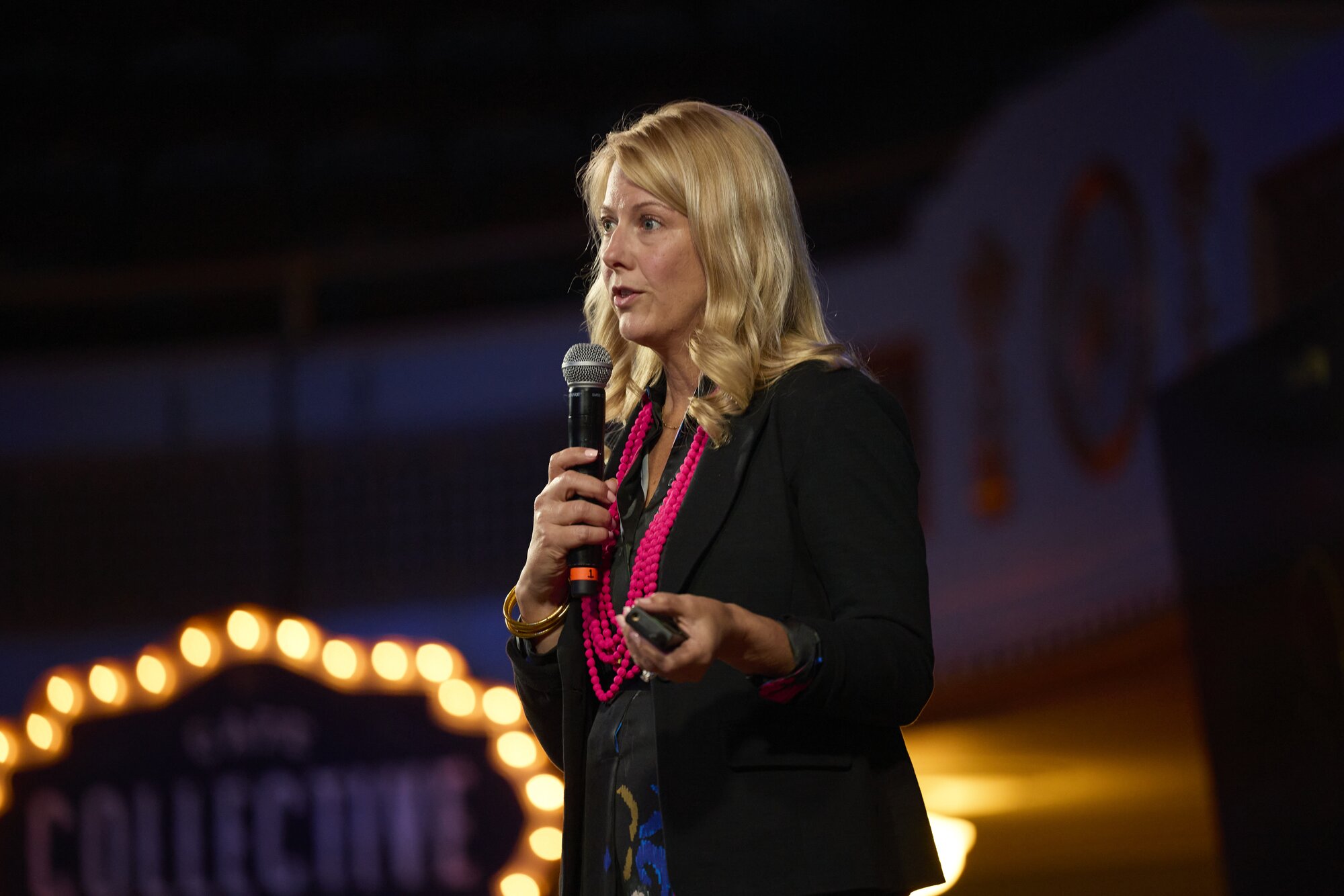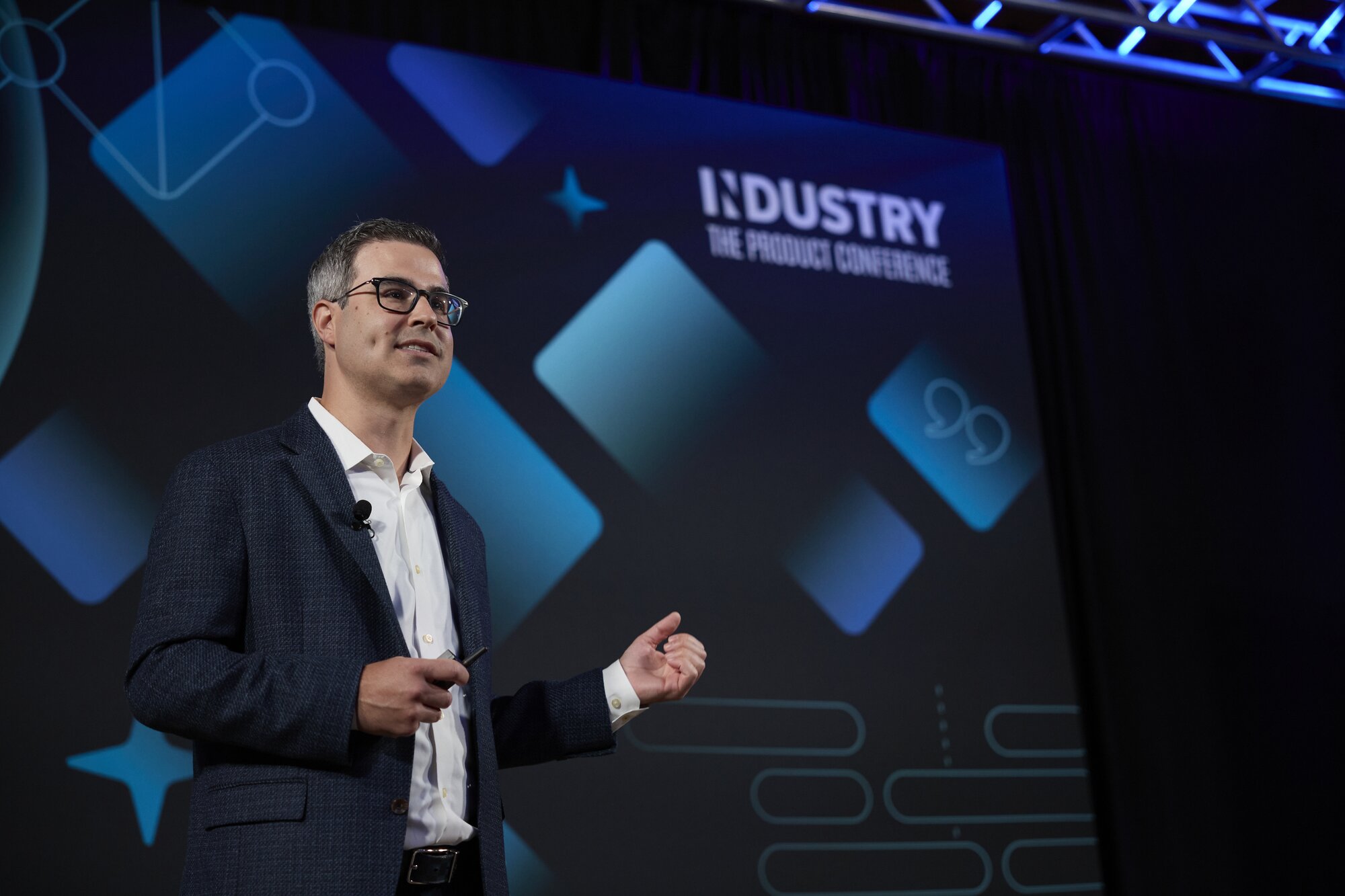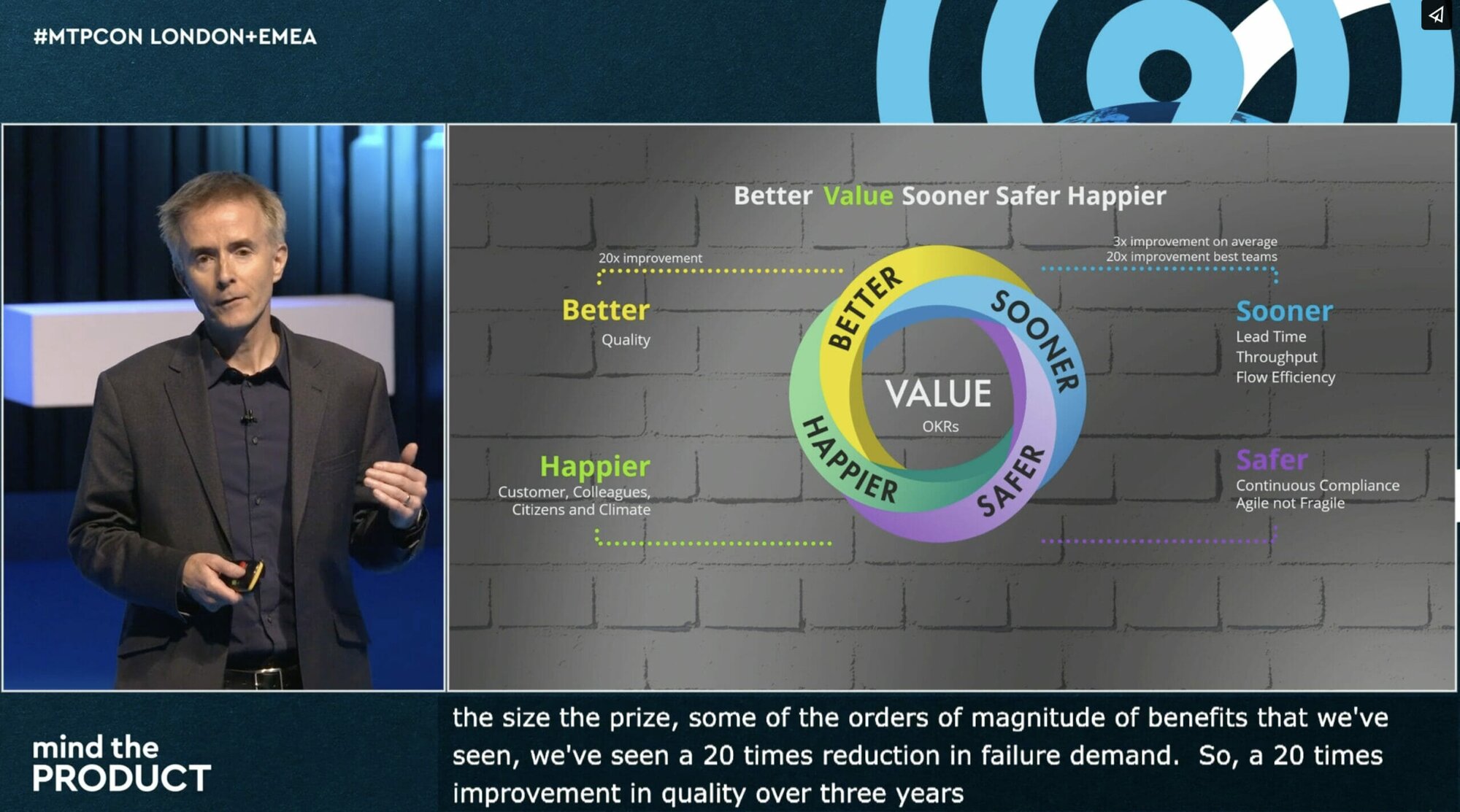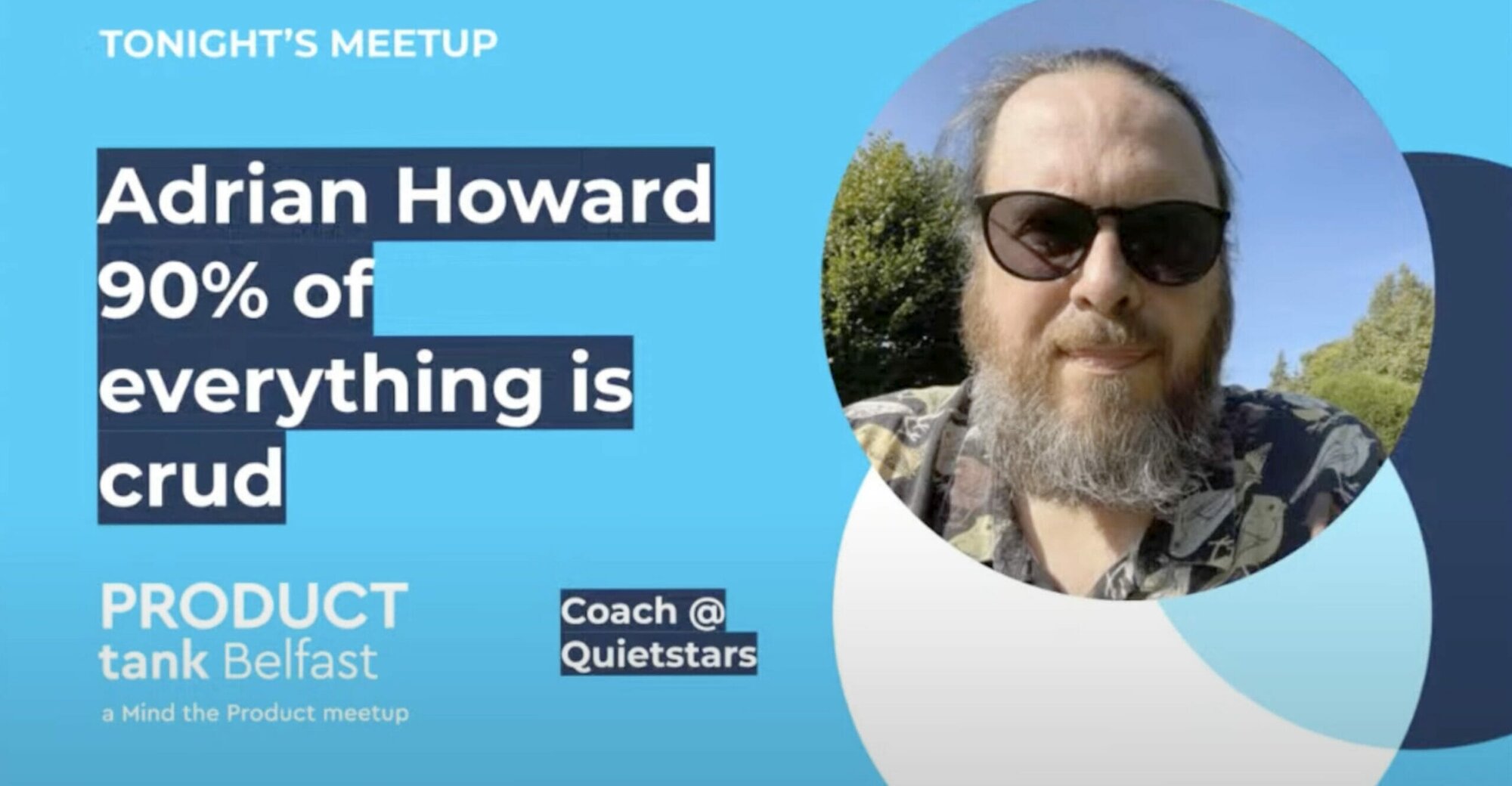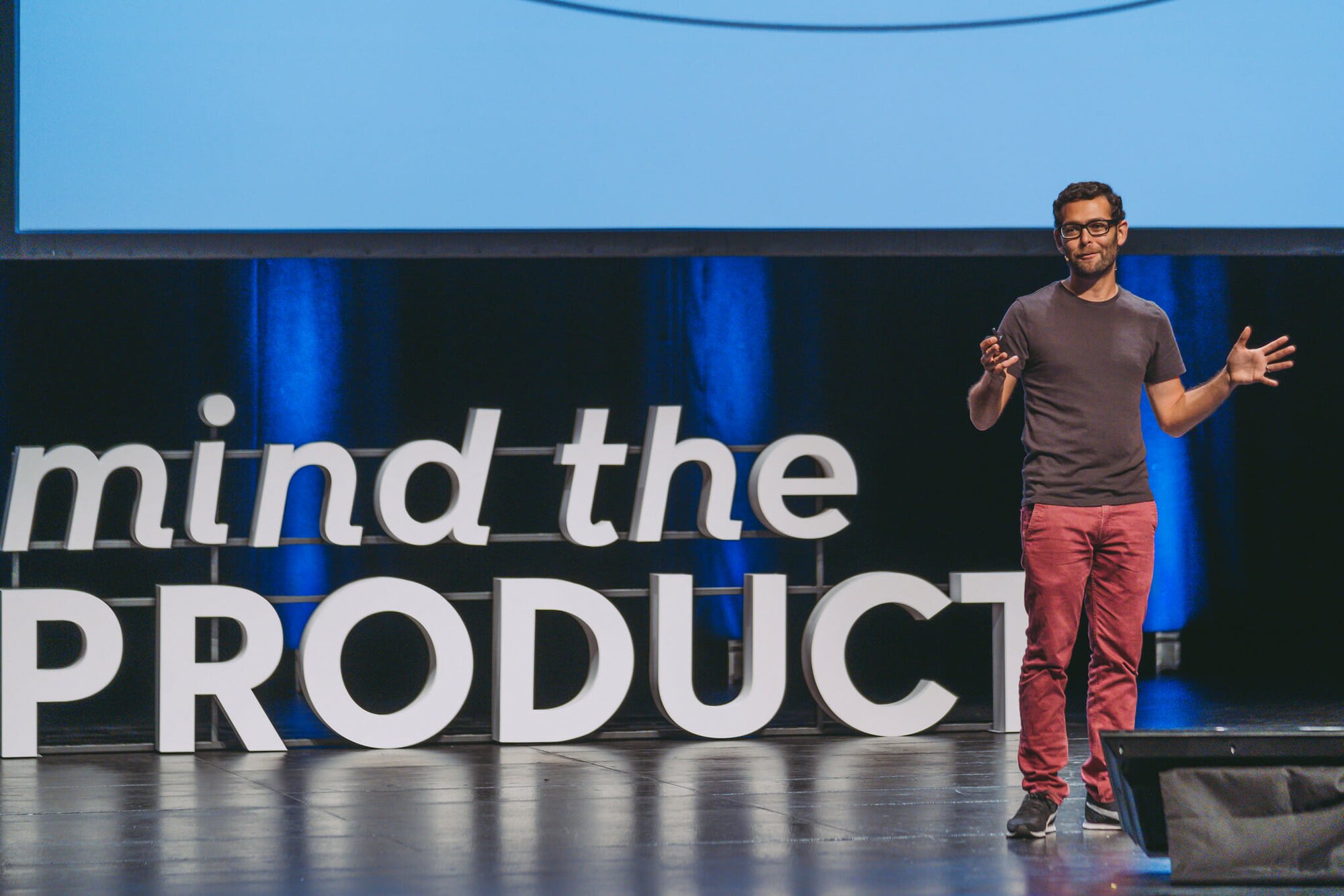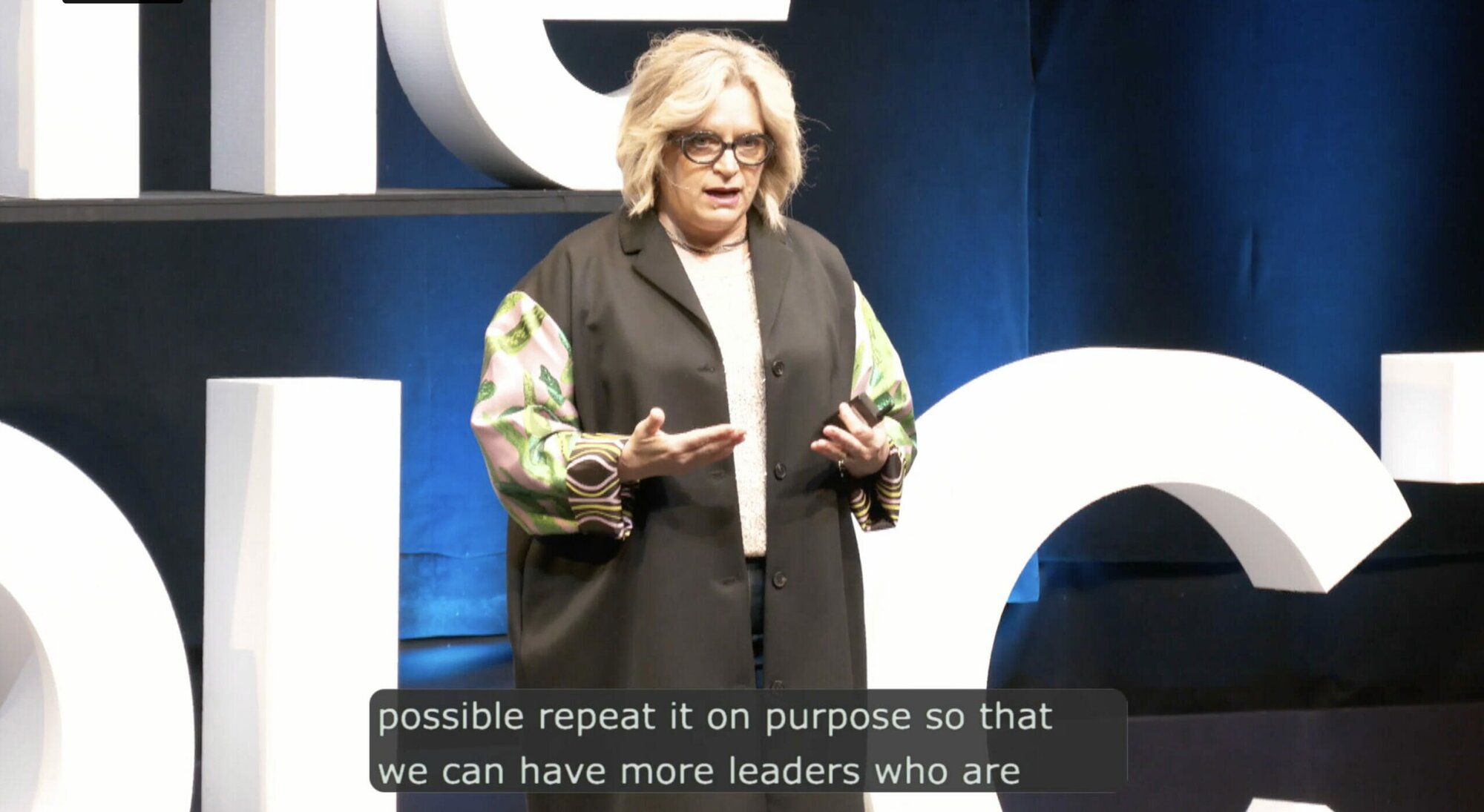In this #mtpcon London+EMEA keynote, Jeff Patton, the author of User Story Mapping and founder and principal of Jeff Patton & Associates describes how businesses that distract product people with output-driven demands will not create the same value as those which are customer-focussed and outcome-obsessed.
Watch this video or read on for key highlights from the talk.
In brief
- Assess your Product Thinking principles and prioritise outcomes over outputs
- Reflect on whether you’re working as a “service provider” for an organisation of “vendors” and look to refocus
- Identify and understand the needs of real customers
- Expose and measure actual product outcomes
Assess your Product Thinking principles
Product Thinking, Jeff explains, is not as ubiquitous as people assume, “it’s how everybody sees the word; we all see the world differently”. For product people, that means that our focus while working, will be continually challenged, and should therefore be continually assessed.
Customers are at the centre of all good products, Jeff says, explaining how a great product solves a problem, is “delightful” and easy to use, reliable, and provides some kind of life improvement. These values are all outcomes, he says, “what your customers do and say and feel” is the core of great Product Thinking. Unfortunately, our customers are not interested in business goals, he continues, stating “when you ask people what makes a great product, they never say ‘it’s finished on time or finished under budget’ […] that’s the crap that we worry about.”
Business interests, or outputs, demand a large part of our focus, drawing our attention to internal processes and metrics, “things like ROI, or at Net Promoter Score, or Annual Recurring Revenue”. While we want to be part of successful organisations, with money-making products that are easy to sell and importantly continue to provide us with work, business priorities can conflict with outcome-first Product Thinking. One example Jeff points to is the “bad news triangle”, a diagram of time, cost, and scope. He explains how an output focus forces us too-often to “pick 2”, resulting in inadequate solutions, where “quality squeezes out”.
Product service providers
Jeff exemplifies the difference between outputs and outcomes by talking through a consumer-provider relationship he has with his landscape gardener Troy. On the surface, Troy’s role aligns with that of a product person: he’s a good communicator, working transparently, to a defined timeline, translating a vision to reality.
That said, where a landscaper outlines costs, time, and money, and aims to make the customer (Jeff) happy, outcomes are not their responsibility. For example, the land on which they build, or how it’s maintained after the job is complete is not their concern. Equally, while they may offer suggestions or advice, they do not need to hold their customer to account with the requirements and understand why they really need their property landscaped – if the scope shifts, or work increases they make more money.
Conversely, product people must be responsible for the whole product process, undergoing discovery and ensure delivery meets all needs, iterating and maintaining on something they have worked on, as part of a stable ecosystem. “If you put features in your product, and people try them and hate them, when you're in the product business that matters, that matters a lot.” Be wary of becoming a product service provider.
Business customer
Practically, it’s not always that simple, Jeff explains, highlighting how at times, business leaders may act as vendors, forcing product teams into service provider relationships. With two examples, he highlights how product thinking can be challenged, for worse or better by those within our businesses and how teams can be enslaved or empowered to deliver a vision:
1. Amazon Firefox phone
Amazon invested huge sums of money in developing a phone which was thought (internally) to provide no value for the customer, but was still made “because Jeff [Bezos] wants it”. Amazon released a phone at $200 which was quickly lowered to 99 cents, before being pulled from production and marked down as a $170 million loss. “Your business is not your customer,” Jeff says, “Don't mistake your process for the product.”
2. Spotify Discover Weekly
Spotify CEO, Daniel EK, described in a Fast Company article how he would have “killed” the incredibly popular Discover Weekly curated playlist feature, stating “I never really saw the beauty of it”. Fortunately, he knew to step back and trust the discovery done by the team who fought for a feature which is now a huge success.
Success comes “when product teams don't mistake their CEO or business stakeholders as customers. And this is also what happens when business stakeholders don't mistake themselves for customers”, Jeff explains, warning of the “weird antipattern” which can happen when business leaders with technical knowledge may treat themselves like vendors, dictating specific features to be built.
Outcome-focussed relationships
Jeff creates an evaluation exercise to understand whether we’re in service provider product roles. Just ask yourself the following question: am I a waiter or a doctor?
- A waiter when taking an order, says yes to requests, sells and upsells and offers you anything you want as the customer is always right.
- A doctor will listen to requirements (or self-diagnoses) and will tell you whatever will get the best health outcome and that may involve telling the patient something they don’t like.
Once you’ve understood your current role and focus, you can work to be a better doctor and “become an expert reframer” Jeff says, describing how “people ask for things all the time, you need to reframe them as problems to solve and outcomes to achieve.” That's where you can build customer understanding and empathy, “it’s hard to ignore customers if you’ve actually met them”.
Jeff closes by imploring us to evaluate our roles, our work, and the relationships we hold with our companies and customers alike. “Help flip the switch for people…help them change their mindset from that service provider or project mindset to a product mindset.”
There's more where that came from!
Jeff Patton has provided lots of great insights to the Mind the Product community over the years. Explore more content from Jeff, more #mtpcon video content, or use our Content A-Z to find even more product management content.

